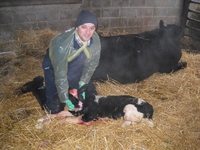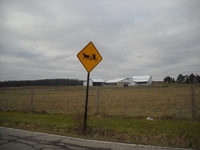Thursday
Nov082012
Case Report: Adult Female Bald Eagle
 Thursday, November 8, 2012 at 06:00AM
Thursday, November 8, 2012 at 06:00AM Winner, Abstracts and Cases
Chelsea Anderson, Cornell University
Signalment: Adult Bald Eagle, Female

Common problems: Bald eagles do not commonly present to the Wildlife Health Center but most cases have been fractures secondary to trauma or lead toxicity.
History and clinical presentation:
This Bald Eagle presented to the Wildlife Health Center on 02/05/2011 after being brought in by a rehabilitator. The eagle was seen walking sternally with its wings folded, down an embankment and across a two-lane road into a bush. Upon presentation the eagle was quiet, alert and responsive and sternally recumbent. On initial evaluation of the legs, the bird was not moving and seemed to have no deep pain when stimulated by hemostats. The cloaca did not have any tone when palpated with forceps. When pressure was applied to the right metatarsal region, the bird reacted appropriately by flapping her wings and moving away from the stimulus. A small wound was seen near the uropygial gland but otherwise the integument was normal. The left leg was slightly abducted away from the body. A small amount of blood was seen in her mouth and on inspection was coagulated in the oral cavity, with a few drops in her glottis. She was weighed at 5.55 kg.
Presenting problems:
• Pelvic fracture (left most significant)
• Paraparesis
• Inability to urinate/defecate voluntarily (spinal trauma)
| Comments Off
tagged  Cornell,
Cornell,  bald eagle in
bald eagle in  Cases/Abstracts
Cases/Abstracts
 Cornell,
Cornell,  bald eagle in
bald eagle in  Cases/Abstracts
Cases/Abstracts 




